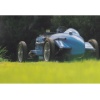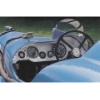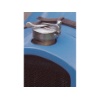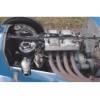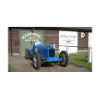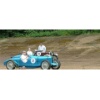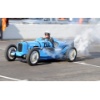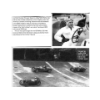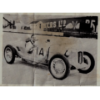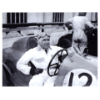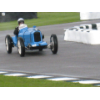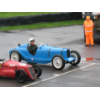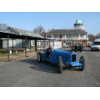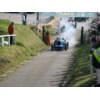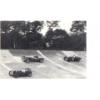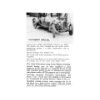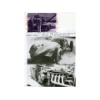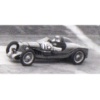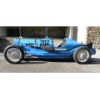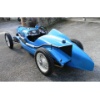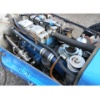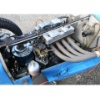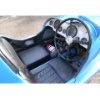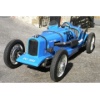

Cuthbert Special
| Bezeichnung/description | Alec Cuthbert Special |
| Jahrgang/year | 1932 |
| Kennzeichen/registration | PG3811 |
| Chassis-Basis/chassis base | Riley 9 |
| Chassisnummer/chassisnumber | 8061 |
| Chassisjahrgang/year chassis | 1930 |
| Motortyp/engine typ | Brooklands 9hp from VC8306; 1933 with Powerplus supercharger |
| Motornummer/engine number |
1930
|
| Bodyhersteller/bodymanufacturer | ED Abbott Ltd of Farnham |
| Rennhistory/racing history |
Alex Cuthbert was a successful works driver for the Riley team during the late 1920's and 1930's and was friends with Raymond Mays, the founder of ERA. Cuthbert ran a garage and tuning business in Guildford which is honoured at the Brooklands Museum by having one of the garage doors painted in his racing colours. Cuthbert acquired the Brooklands Riley VC8306 which had won the 1100cc class at the 1931 German Grand Prix; he drove this car in the 1931 BRDC 500 mile race at Brooklands as a member of the Riley works team. He didn't like the way that the car handled the Brooklands bumps so decided to transfer the works engine and gearbox to a standard nine chassis and because he preferred the way the longer chassis rode, this was the basis of the Cuthbert Special. The car was fitted with a body with a full length under tray and a pointed tail. The body was split at the scuttle to allow it to flex on the notoriously bumpy Brooklands track.
The car's best result was in the 1932 BRDC 500 when Cuthbert and Capt. C.W. Fiennes finished fourth overall at an average speed of 97.41mph, despite losing 14 minutes in the pits with fuel feed problems. The car won the Yorkshire Junior Short handicap at the 1932 Autumn BARC meeting with an average speed of 93.32mph and a fastest lap at 100.61mph. In 1933, the car was extensively modified and a Powerplus supercharger was fitted. Cuthbert designed a new timing case cover and modified the water cooling. R.J. Appleton used these modified castings as patterns for the Appleton Riley. After a spectacular blow-up in the 1933 BRDC 500 mile race, Cuthbert converted the car to a dry-sump oil system and fitted an Aston Martin oil and scavenge pump which fed from a large tank under the driver's seat. This is no longer on the car but is included in the sale. The engine ran with 17psi of boost at 5,900rpm and reached speeds of 130mph. The car also had the prototype Girling rod brake system. In its present form, the car first raced in the Light Car Club Relay Race (number 1A) on 22nd July 1933, but did not finish. The July edition of Autocar reported that "….the car, although very fast and shaping well, was too new for a serious test." The car competed in several Brooklands races in 1934 and 1935. Post-war, it was campaigned at Goodwood during the 1950's, driven by Ian Strickland and later by Roy Whitehouse at Silverstone. Eventually the car joined the Majzub collection and was raced at Donington Park in 1991. The present owner bought the car in 2005 and has entered it in various VSCC events and Brooklands celebrations. This Riley 9HP is registered for the road and is supplied with a V5C registration document, old log books and old MoT test certificates. An extensive history file accompanies the car which includes letters from W.A. Cuthbert and Arthur Kingston (who helped build the car) as well as several previous owners and many photographs showing the car during its long racing life. This represents a piece of living Brooklands history which would be welcomed at any historic racing event. |
| zum Verkauf/for sale | Ja Auktion am 29.11.2014/ yes by auction at 29.11.14 |

